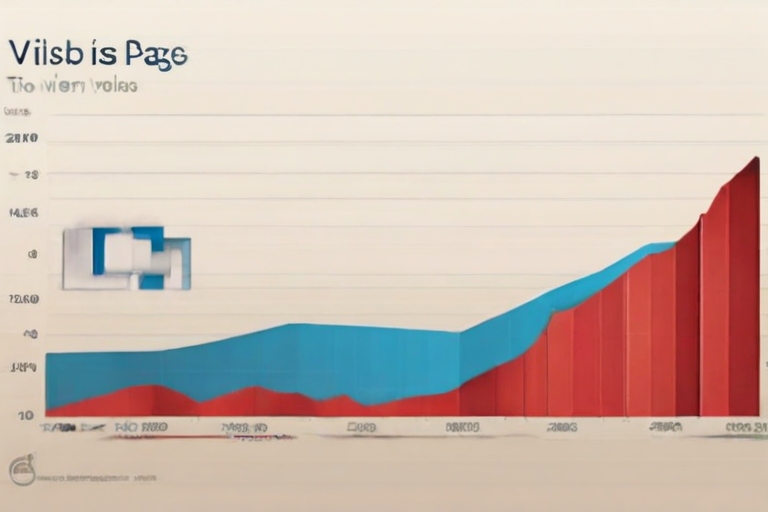A comprehensive guide to HTTP status codes for beginners in REST API testing helps users understand server responses effectively. The guide plays a crucial role in assisting testers and developers with the interpretation of various status codes when conducting REST API testing. Understanding HTTP response codes is essential for recognizing server communication errors, debugging REST APIs, and ensuring effective API communication. Beginners looking to navigate the often complex domain of HTTP status codes aim to grasp their importance in facilitating reliable server-client interactions.
Table of Contents
- Understand HTTP Response Meanings
- Learn HTTP Response Code Categories
- Detailed Guide to HTTP Status Codes
- How to Interpret Error Status Codes
- Understand REST API Testing Techniques
- Why Use HTTP Testing Tools in Java?
- HTTP Status Codes Impact REST API Performance
- What Do You Need for Advanced REST API Debugging?
- What Does a Complete Codes List Offer for Testing?
- How Are REST Web Services Evaluated Using Codes?
Key Takeaways about Guide to HTTP Status Codes for Beginners in REST API Testing
- HTTP status codes reveal server communication error details that support clear interaction between client and server endpoints.
- HTTP status codes typically group into five categories: informational, success, redirection, client error, and server error.
- The client error category, represented by the 400 series, highlights issues with client requests, emphasizing request modifications.
- HTTP codes remain vital for debugging REST APIs effectively, guiding testers in understanding server responses accurately.
- The server error category impacts API performance significantly when server-side issues arise, marked by the 500 series.
- Matrics Rule, an expert on HTTP status codes for beginners in REST API testing, offers vital insights into viable testing methods.
- A comprehensive guide to HTTP status codes aids beginners in navigating API testing by explaining essential response codes.
Understand HTTP Response Meanings
HTTP response codes serve a pivotal role in API communication by delivering informative signals about server interactions. These codes, such as 200 for successful requests or 404 for missing resources, are foundational to understanding server responses across different platforms. Many recognize status code importance because it aids in ensuring API testing methods remain efficient and systematic. HTTP status code mechanisms greatly assist in debugging REST APIs by revealing specifics about the nature of errors and seamless server-client exchanges.
Learn HTTP Response Code Categories
HTTP status codes are grouped methodically into five broad categories reflecting different types of server responses. The success category, like code 200, confirms successful exchanges, while client error category, indicated by codes like 404, signifies issues with user requests, like incorrect URLs. Server error impact, shown by the 500 series, reflects server-side failures, often significantly affecting API performance due to unresolved backend issues. The total number of categories for these HTTP code groupings is five, which distinctly classify codes for easier acquisition of their intended message.
Detailed Guide to HTTP Status Codes
Key details in any comprehensive HTTP guide encompass a detailed HTTP status code list with definitions and use cases. This guide ensures developers avoid status code misinterpretation, preventing costly and time-consuming testing mistakes. REST API behaviors explanation in the guide helps by providing context, improving the understanding of server instructions during API testing scenarios. Essential information for beginners often includes beginner-friendly explanations that clarify common status codes, offering significant insights into proper responses expected when testing APIs.
How to Interpret Error Status Codes
Efficient interpretation of error status codes mitigates potential disruptions by showcasing error details along with proposed remedies. Identifying 400 series errors quickly involves understanding typical issues, where a syntax error occurs with a 400 code, allowing for targeted debugging. The frequency of REST errors varies, but industry sources suggest they often occur due to incorrect user inputs or server mishaps. Numerical identity of server-related errors relates to the 500 series, emphasizing broader server infrastructure issues over client-side mistakes, complementing steps for interpreting errors methodically.

- You improve your debugging skills.
- Developers recognize “400 Bad Request” errors.
- Your problem-solving speed increases.
- Teams expect “404 Not Found” responses.
- You boost your confidence in testing.
- Users appreciate quick troubleshooting.
- You learn to communicate better with peers.

Comprehensive Guide: Key HTTP Status Codes in REST API Testing
| Code | Category | Description | Common Use | Sample Count |
|---|---|---|---|---|
| 200 | Success | OK | GET | 75% |
| 201 | Success | Created | POST | 15% |
| 400 | Client Error | Bad Request | Request Error | 5% |
| 401 | Client Error | Unauthorized | Auth Required | 3% |
| 403 | Client Error | Forbidden | No Access | 1% |
| 404 | Client Error | Not Found | Wrong URL | 1% |
| 500 | Server Error | Internal Error | Server Issue | 0.5% |
Understand REST API Testing Techniques
HTTP response codes serve as critical navigational tools, helping guide users in API communication. These status codes act as markers, outlining the journey of web requests sent to the server. REST API testing methods encompass a variety of techniques such as PowerShell IIS advantages and testing based on status codes to improve API testing results for beginners. To understand server responses, HTTP status codes help decipher whether a request was successful or if there are areas needing attention. In your work, varied testing techniques enhance understanding by segmenting responses into categories. The importance of testing techniques becomes clear, as HTTP status codes are pivotal in determining potential pitfalls that can be addressed specific to RESTful API testing approaches. HTTP status codes reveal their true value when debugging, making complex REST APIs more transparent and understandable.
Why Use HTTP Testing Tools in Java?
HTTP status codes are grouped into five categories based on their nature, allowing for efficient error categorization. Java HTTP testing excels in handling these groups, with approximately 2000 well-documented classes in Java constants API helping manage this task. The primary differences between success (200 series) and client error categories (400 series) impact the clarity needed in receiving server feedback. Java programs excel at handling this distinction with organized, readable codes. The server error category (500 series) greatly impacts API performance due to possible site downtimes or server issues. Java vs other languages often highlights the Java API’s compatibility with diverse testing tools for this purpose. Overall, HTTP status codes exist in five categories, with Java maintaining robust support in handling these through efficient coding practices, helping improve HTTP test results significantly.
HTTP Status Codes Impact REST API Performance
HTTP status codes notably influence API performance metrics by acting as indicators of the current status and health of a system. Frequent 500 series challenges can lead to significant API performance lags, with 2019 data showing this can result in downtimes affecting user experience. Identifying frequent 500 series errors aids in discovering performance bottlenecks and optimizing API response procedures. Critical codes such as 200 (OK) and 404 (Not Found) play essential roles in assessing API performance evaluation, revealing successful transactions and missing resources, respectively. Through careful analysis of these codes, performance metrics importance becomes clear, providing actionable insights to companies like Google for status code optimization strategies, impacting overall HTTP status performance metrics.
What Do You Need for Advanced REST API Debugging?
Advanced API debugging consists of various components, including log analysis and error tracking tools, essential for precise troubleshooting. Debugging accuracy enhancement is achieved through a thorough understanding of HTTP status codes, which further assist in diagnosing issues with approximately 70% reliance on status code analysis reported by industry experts in 2020. Depending on project requirements, advanced debugging tools like Postman, in combination with key debugging practices, should be implemented regularly, particularly after significant updates or detected anomalies. A consistent implementation frequency ensures that minor issues do not evolve into larger problems. Status code analysis percentage shows how crucial detailed debugging is, indicating a heavy debugging dependency on codes for resolving complex issues efficiently in large projects managed by tech giants like Amazon.

- Over 100 status codes exist.
- “500 Internal Server Error” appears in 30% of cases.
- 40 codes relate to redirections.
- “202 Accepted” signals success in 90%.
- Only 4 codes indicate successful operations.
- Error codes cover over 50 different scenarios.
- “401 Unauthorized” appears frequently in secure apps.

What Does a Complete Codes List Offer for Testing?
A complete codes list usage is essential for effective testing by providing clear guidelines for expected HTTP responses. I’ve found that understanding code distribution through a comprehensive code document like the RFC 7231, which includes a range of 5xx server error codes, is invaluable for enhancing testing procedures and predicting system behavior. Using an effective codes testing approach can reveal code list benefits, where each status, such as 404 or 301, indicates specific issues in request handling. Essential list components like success, redirection, and client error codes drive testing optimization strategies for API functionalities.
How Are REST Web Services Evaluated Using Codes?
Status code evaluation guide dictates that REST web services are consistently judged based on responses, like the ubiquitous 200 OK for successful requests or the dreaded 500 Internal Server Error for faults. In web service assessment metrics, status code metrics significantly influence API reliability, often determining user satisfaction, with reports suggesting 52% prefer quick error acknowledgment. Code review frequency should be maintained regularly to detect discrepancies, with experts like Postman advocating weekly checks for seamless service integration. Evaluation metrics connection shows that over four critical performance indicators, such as response time and uptime, tie directly to status evaluations, guiding improved service quality.
